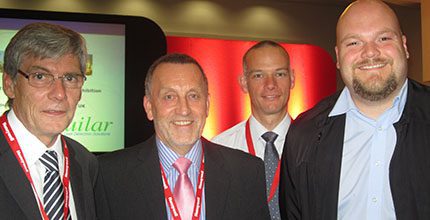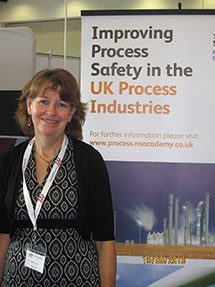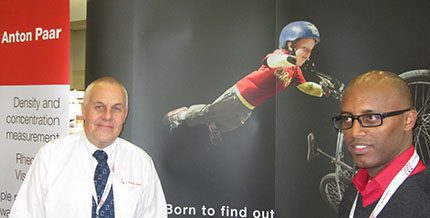
Ron Tomal, Geoff Mountford and Neil Rimmer, Certas Energy
HSE – rising to the challenge
“Buncefield woke us all up,” said Ian Travers, head of the HSE’s Chemical Industries Policy Unit who reported that globally, the UK was ‘right up front’ on its process safety leadership. Maintaining the country’s ageing plants takes a high level of competence, resources and more than a little TLC. “The industry has come a long way with much time and effort spent in learning lessons, but 25% of HSE’s work still involves investigation into incidents, this should be lower.”
The UK has 1000 COMAH sites. HSE is happy to be challenged on the controlling of major hazard risks to ensure a better outcome for all concerned. In response to an industry request for higher level interface, a strategic forum has now been established.
Wishing to avoid duplication in inspection, from April 2014, lower risk COMAH establishments will have just one Competent Authority (CA) (HSE or Environment Agency) to inspect them. Next year’s inspections will focus on the control of a particular risk with management of that risk to be more clearly demonstrated.
Going public – new requirements
Christina Roberts looked at the impact of the Seveso III directive on bulk liquid storage, reassuring the audience that ‘a lot of things will stay the same’. The modernised directive will take into account the Internet and the public’s right to information on a site’s safety reports, emergency plans and transitional arrangements in both digital and printed format.
HSE is trying to make this as ‘burdenless’ as possible and has been trialing at selected sites nationwide including Petroineos at Grangemouth. Work is ongoing with respect to disclosure at sites where confidentiality and security issues need to be considered.
All sites, not just top tier, will need to proactively produce public information. Whilst top tier sites are used to producing such information, lower tier sites will need to ’up their game’ said Christina. In 2014, there will be a greater emphasis on sub-COMAH sites where an incident would have an impact.
CHIP is on its way out, to be replaced by CLP (chemical labeling and packaging) by 2015. From February 2014, heavy fuel oil will change from ‘dangerous to the environment’ to ‘petroleum products’ category. Alternative fuels are now a named category.
Leadership weaknesses exposed
Despite good progress post Buncefield, leadership weaknesses continue to be exposed said Jenny Clucas, strategy director for chemicals and petrochemicals, Cogent. “We need to be grown up and take responsibility.” By 2014, the target is that 50% of COMAH sites will have participated in training awareness and process safety courses – leadership, management and operational – delivered to agreed training standards. In the past there was ‘a dearth of training’ and a ‘lack of standards’ and whilst we should celebrate where we, there’s still a long way to go,” said Jenny.
We haven’t sorted this out by a long way,” agreed Allan Laing, chief executive, Pentagon Chemicals Not only referring to Buncefield, his presentation was illustrated by images of Flixborough (1974), Piper Alpha (1988), Texas City (2005), and Deepwater Horizon (2010), a total of 221 fatalities.
“We’re good at talking about what to do but not how to do it,” said Allan. Pentagon carried out 25 plant audits between October 2012 and March 2013, providing the audience with a practical example of process safety implementation in action.
“The biggest lesson we’ve learnt is that we haven’t learnt the lessons,” said Bud Huspith, Unite’s national health & safety advisor. “Why is it taking so long?” With union reps blaming management and employers needing to be reminded of their duties, Bud stressed the need for trust, honesty and workforce involvement.
In the Q&A session that followed, we were reminded that safety’s enemy was complacency – just because nothing has happened, the risks are still there. Safety is an ongoing journey which needs constant commitment. Whether at work, home or play, doing things to a consistent high standard is difficult for us humans.

New resources and guidance
Like Mick Jagger, Richard Kellaway senior advisor, Global Infrastructure Management, is ‘still strutting his stuff’ albeit in tank storage. Richard led the afternoon session which opened with Peter Davidson, director – safety, commercial and projects, UKPIA.
Along with the TSA, UKPIA is a member of the Chemical and Downstream Oil Industries Forum (CDOIF) which uses a collaborative approach to encourage and promote health, safety and environmental improvement. New resources – leak detection, human factors and ageing plant – are due for publication. A matrix based environmental risk assessment tool is newly published,
Dr Mark Scanlon, HSE team manager at the Energy Institute (EI) spoke about new guidance on containment (see the panel alongside). The EI is interested in talking to companies that manufacture products for tank integrity with a view to securing additional finance for fire testing.
There were product presentations from Abfad and Aquilar. Chris Haritou of Abfad spoke about FuelVac, a patented, multi-layered tank lining system with class 1 vacuum leak detection, accreditation for which is in its final stages with TUV Nord certification. Julian Walmsley, managing director of Aquilar discussed the company’s leak detection products for the critical 6 areas in tank farms and terminals including TraceTek sensing cables with the ability to detect and locate hydrocarbons at any point.

